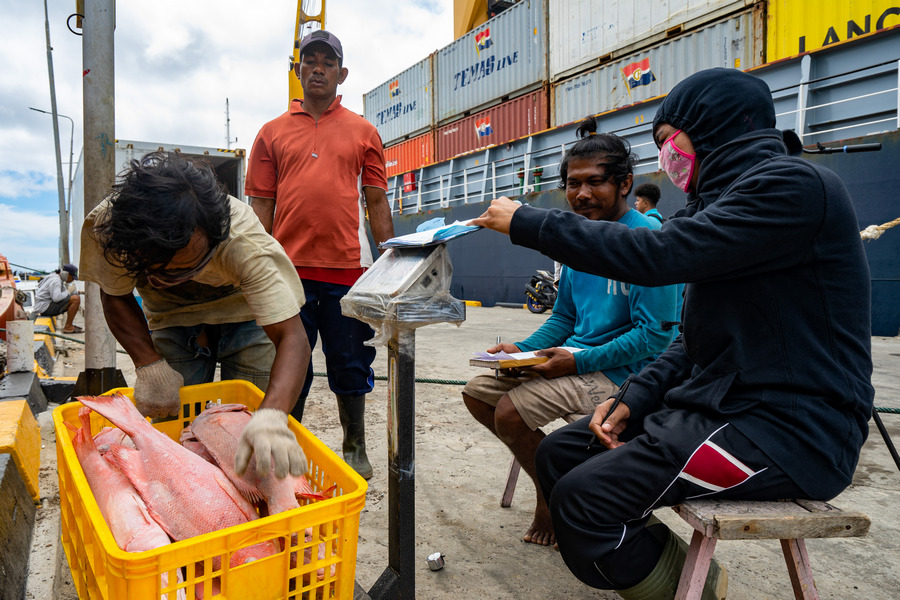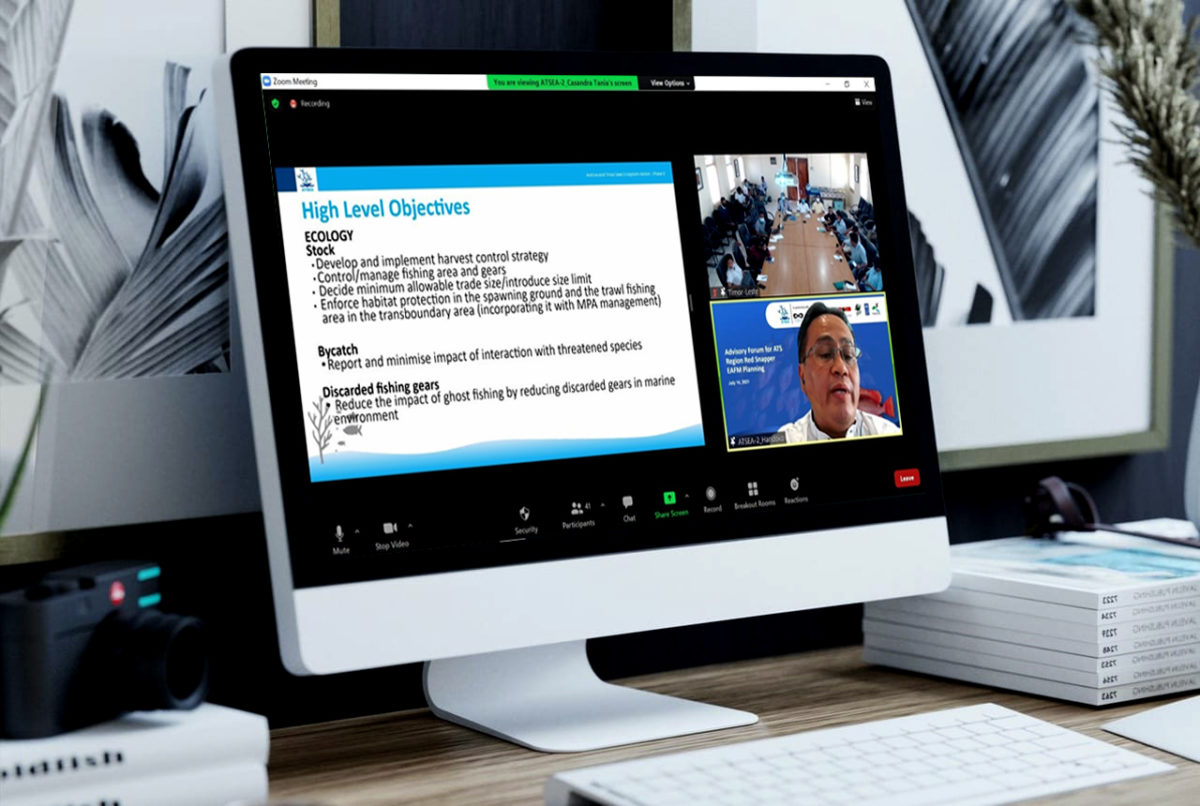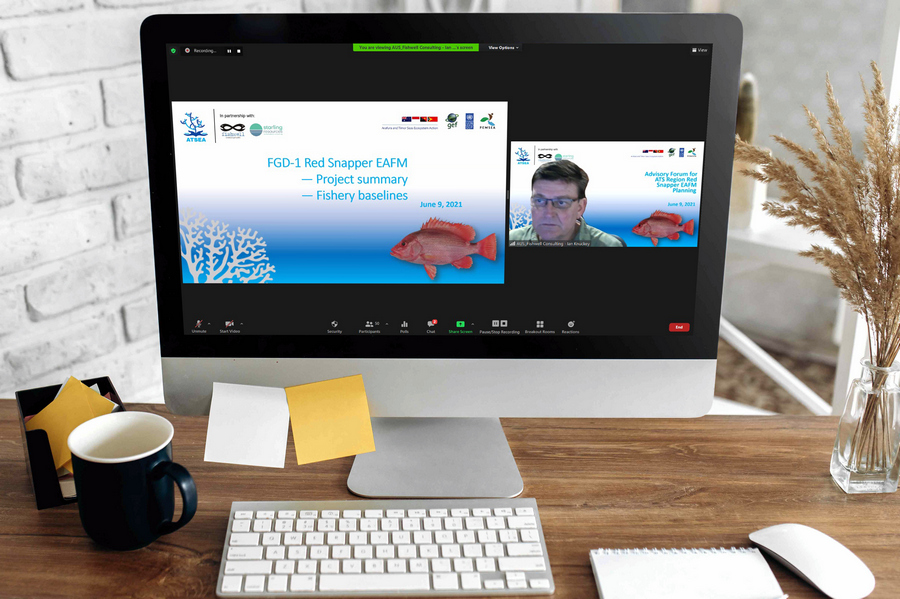The Arafura and Timor Seas (ATS) region is home to several red snapper species that are important to commercial, artisanal and recreational fisheries in the region. To sustainably manage the fisheries, a plan of comprehensive and integrated ecosystem-based approaches to natural resource management and conservation is being developed in a participatory manner for the region.
Red snapper fisheries are diverse, including small-scale and larger industrial-scale vessels that are part of mixed-species demersal fisheries. In the ATS region, these fisheries are facing a number of threats: overfishing; destruction of natural habitats; and illegal, unreported and unregulated (IUU) fishing. These issues are exacerbated by a lack of data and consistent reporting.
To tackle these problems, the GEF/UNDP/PEMSEA ATSEA-2 Programme has been promoting the use of an Ecosystem Approach to Fisheries Management (EAFM). This is a holistic and practical approach to implementing sustainable development, which sets out to maximise the ecosystem benefits of a fishery system. Essentially, EAFM is a way of finding a balance between human and ecological well-being through good governance for future generations.
In order to develop a regional EAFM plan for red snapper in the ATS region, participation from key stakeholders across sectors is critical. That’s why ATSEA-2 has commissioned Melbourne-based Fishwell Consulting and Bali-Based Starling Resources; their plan will provide guidance for ATS countries, helping them to improve their red snapper fisheries status. However, this has been made more difficult by the many restrictions resulting from the Covid-19 pandemic.
Working together with these partners to facilitate better and more systematic input from stakeholders, ATSEA-2 has established an advisory forum, made up of key stakeholders from across sectors. This includes representatives from local, national and regional government, academia, private enterprise and non-profit organizations. Fishwell Consulting and Starling Resources has also facilitated a series of virtual focus group discussions (FGDs) to solicit input into the EAFM planning in a stepwise and systematic fashion. These FGDs have taken place alongside other project activities, such as data collection and training, to ensure effective development of the draft plan.

The first and second FGDs were conducted in June and July 2021. Held on 9 June 2021 and attended by 45 participants from four ATS countries, the first FGD identified priority issues deemed integral to red snapper fisheries. On 14 July 2021, the second FGD discussed the goals and objectives of the plan in more detail and was joined by 57 participants. Each FGD featured a breakout session, in which participants discussed FGD topics for their respective countries in more detail.


The advisory forum and virtual FGDs work as platforms where key ATS stakeholders can meet virtually and provide inputs to the draft plan. Through creation of these platforms, the ATSEA-2 Programme has helped to make the development process as participatory as possible, ensuring that plans are built from the ground up, with careful nurturing and ownership from above.
From the first two FGDs, the outline of the EAFM plan has started to be filled in. A number of common issues – such as bycatch, habitat management, data, surveillance and enforcement in regard to IUU fishing, along with consistent policies and standards across the region – were identified. From those issues, ecological, socio-economic and governance goals and objectives were reviewed, discussed and compiled.
Aris Budiarto from Directorate of Fish Resource Management of MMAF commended that the development of the red snapper EAFM plan for the ATS region, through the series of FGDs and involving competent stakeholders, has been going well. This plan is relevant to Indonesia’s Snapper and Grouper Management Plan for Fisheries Management Areas (FMAs), which is already available. In the near future, synergy and harmonisation between the ATSEA-2 Programme and the Indonesian Government need to be strengthened to ensure all stakeholders will implement the management plan. Engagement with management authorities of FMA 573 and 718, which are part of the ATS region, is also crucial. Finally, this red snapper EAFM plan is well-aligned with and can support the precision fisheries concept being implemented by the Ministry of Marine Affairs and Fisheries, focusing on output control (i.e. enforcing the use and management of fisheries quota).
EAFM plan development is an iterative and ongoing process. The third FGD on management actions took place on 24 August 2021. The regional EAFM plan is still far from complete. Nevertheless, ATSEA-2 is committed to supporting the implementation of sustainable fisheries in the region, through a combination of good governance, better monitoring and surveillance, and capacity building.
ATSEA-2 is the second phase of the Arafura & Timor Seas Ecosystem Action (ATSEA) programme; a regional partnership involving the governments of Indonesia, Timor-Leste and Papua New Guinea, with the support of the Australian Government. Its objective is to collectively manage high marine and fisheries resources in the Arafura and Timor Seas (ATS) region.
A Global Environment Facility (GEF)-funded programme, ATSEA-2 is managed and executed under the United Nations Development Programme (UNDP), with Partnerships in Environmental Management for the Seas of East Asia (PEMSEA) Resource Facility (PRF) as an implementing partner. ATSEA-2 is committed to safeguarding the livelihoods and prosperity of coastal people, particularly in its transboundary areas, through the implementation of sustainable integrated concepts.
(Casandra Tania)


